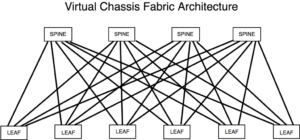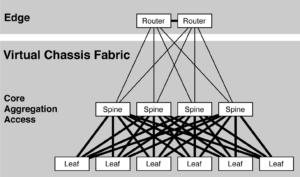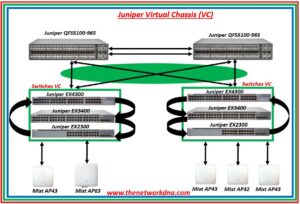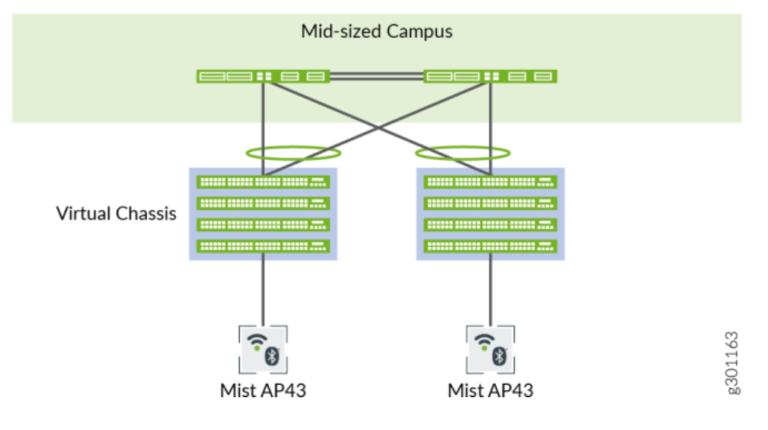The term “virtual chassis fabric” might sound complicated, but it’s actually a smart way to manage your network devices. Virtual chassis fabric allows multiple devices to work together as one, making everything easier to control and faster to use. This system is perfect for small and medium data centers that need high-speed and low-latency connections.
With virtual chassis fabric, your network can grow as your needs grow. You can add more devices without worrying about breaking the system. It also helps keep your network running smoothly even if one part has a problem. In this blog post, we’ll explore how virtual chassis fabric works, its benefits, and how it can help your business.
What Is Virtual Chassis Fabric and Why Is It Important

Virtual chassis fabric is a networking solution that connects multiple devices into one logical system. It simplifies management and ensures smooth communication between devices. This setup is highly valuable for small and medium data centers needing high-speed connections.
By using virtual chassis fabric, your network becomes more organized. You can control all devices as if they are one, which saves time and effort. It is also designed to reduce delays, making your network faster and more reliable.
Additionally, this technology helps avoid downtime. If one part of the system fails, the rest of the network continues to function. This makes virtual chassis fabric an important choice for businesses looking for dependability.
How Virtual Chassis Fabric Makes Your Network Smarter
A virtual chassis fabric improves your network by allowing multiple paths for data to flow. This ensures that the system runs smoothly even during high traffic. It uses smart algorithms to balance traffic across all available paths.
The design supports growth without complications. You can add more devices as needed, and they will work together seamlessly. This flexibility means you don’t have to worry about outgrowing your network’s capabilities.
Moreover, virtual chassis fabric simplifies network setup. It uses auto-provisioning, allowing you to plug in devices and start using them with minimal configuration. This makes it user-friendly, even for those who are new to networking.
Key Features of Virtual Chassis Fabric You Should Know

Virtual chassis fabric has several standout features. One of the most important is low latency. The system ensures that data reaches its destination quickly, even during heavy use.
Another key feature is resiliency. With multiple paths for data, the network stays functional even if one link fails. This makes it reliable for businesses that need constant connectivity.
Flexibility is also a major advantage. You can easily add new devices without major changes to your setup. This makes virtual chassis fabric a great choice for growing organizations.
Spine-and-Leaf Architecture in Virtual Chassis Fabric Explained
The spine-and-leaf design is a foundation of virtual chassis fabric. It connects all leaf devices to all spine devices, creating a web of connections. This layout ensures that each device is just one or two hops away from any other device.
Key Benefits of Spine-and-Leaf Architecture
- Low Latency: Data takes the shortest route possible.
- Reliability: Multiple paths keep the network running smoothly.
- Scalability: You can add more devices easily.
This architecture supports both QFX5100 and QFX5110 switches. With these devices, the system works efficiently, even in mixed setups. Understanding the spine-and-leaf design helps you get the best out of virtual chassis fabric.
How Virtual Chassis Fabric Boosts Network Resiliency

Virtual chassis fabric is designed to keep your network running even when problems occur. Its smart architecture ensures that there are multiple paths for data to travel. If one link or device stops working, the system automatically redirects traffic to other available paths.
This feature makes virtual chassis fabric a reliable choice for businesses that cannot afford downtime. Whether it’s a busy day or a sudden failure, the network continues to perform without interruptions. This resiliency helps protect your data and ensures smooth communication between devices at all times.
Conclusion
Virtual chassis fabric is a great solution for building a smart and fast network. It connects multiple devices into one system, making it easier to manage and expand as needed. With features like low latency, resiliency, and flexibility, it’s perfect for small and medium data centers looking for reliable performance.
By choosing virtual chassis fabric, you are investing in a system that grows with your needs. Its ability to handle traffic efficiently and stay strong during failures makes it a dependable choice. Whether you’re starting a new network or upgrading an old one, this technology can make your job simpler and your network better.
FAQs
Q: What is a virtual chassis fabric?
A: Virtual chassis fabric is a network system that connects multiple devices into one logical unit, making it easy to manage and operate.
Q: How does virtual chassis fabric improve network speed?
A: It reduces delays by using smart algorithms and a spine-and-leaf design, ensuring data takes the shortest path.
Q: Can I add more devices to a virtual chassis fabric?
A: Yes, it is flexible and allows you to add more devices as your network grows.
Q: What happens if one part of the virtual chassis fabric fails?
A: The system has multiple paths, so it keeps working even if one device or link fails.
Q: Which devices work best with virtual chassis fabric?
A: QFX5100 and QFX5110 switches are commonly used and highly recommended for this system.
